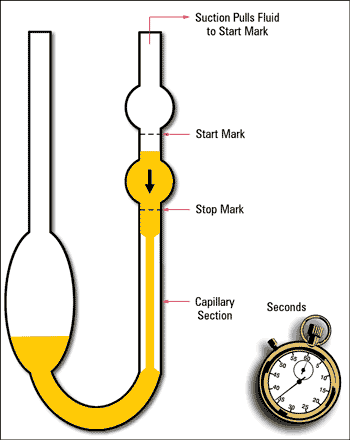Originally Posted By: Shannow
Take Larry's measured figures at
6,000RPM, and assume Mr Honda's squirters are 1.0mm dia.
Oils are considered at 100C, as that's what the KV is on the data sheet.
30W - 60 psi - M1 AFE
40W - 84 psi - M 4T 10W40
50W - 90 psi. - M 4T 15W50
Flow Rate through each squirter in litres per minute (using Benoulli's equation)
30W at 60 psi - 4.6 l/min
40W at 84 psi - 5.4 l/min
50W at 90 psi - 5.6 l/min
All at pump relief (99psi)...5.9l/s
Now the piston cooling is clearly dependent on piston cooling squirter flow, so by choosing an oil simply because you don't want flow through the pump relief means nearly a 20% reduction in piston squirter flow in the mid range....simple physics.
But you'll bring up molasses and water again...
That's where Reynolds' Number Correction comes in, and again, I'll point you back to my discussion on the operation of squirters, having a larger diameter section before the nozzle, so that the orifice, pressure, and density are controlling the squirter flow, not the viscous effects of the fluid.
For the three oils and pressure, Re
30W - Re is 940
40W - Re is 760
50W - Re is 640
D2/D1 is the ratio of the hole to the feed pipe.
Clearly, the smaller the number (bigger feed for smaller orifice), the flatter the curve is in the range of Re's that we are talking for a piston squirter.
In the range of 0.5 (hole half feed pipe diameter), to 0.1 (hole 1/10 of pipe diameter) there's SFA difference (and you can see that the thinner viscosity is actually choked a little more (flows less) than the thicker oils around the 600 mark)...not enough to write home about
Again, if you are lubing your engine with Mollasses, and your mate is running water in his, YMMV, but engine oils at operating temperature aren't molasses versus water, whatever strawman you are trying to create.
Those calculated flow figures are not measured flow rates and are erroneous for a number of reasons:
First, unless I missed it Larry didn't state which 30W, 40W and 50W oils he used when he took his OP readings so you may not be using the right oil's.
Second, assuming the oils used were the brands you've stated, you can't use the published KV100 spec's from the PDS but rather must use the actual operational viscosities that correlate the oil pressure figures, which means used in service oil.
So instead of the 11.0cSt figure for M1 0W-30, the 9.87cSt figure with 700 in service miles would be more appropriate.
That 10% lighter oil would of course have produced a higher calculated flow rate.
Third, in addition to permanent oil shear, temporary shear will apply, consequently the kinematic 100C viscosity won't be accurate and the HTHSV at 100C should be used but we don't have those figures.
Finally, the oil back-pressure figures at a given rpm and oil temperature that oil gauge provides won't of course tell one the actual oil flow rates but it is are all you need to compare relative flow rates of different oil viscosities.
The fact that the 30W oil produced less OP than the 40W which produced less OP than the 50W is due to the lower resistance to flow of the relatively lighter oil.
Viscosity after all, by definition, is an oil's resistance to flow and shear.






